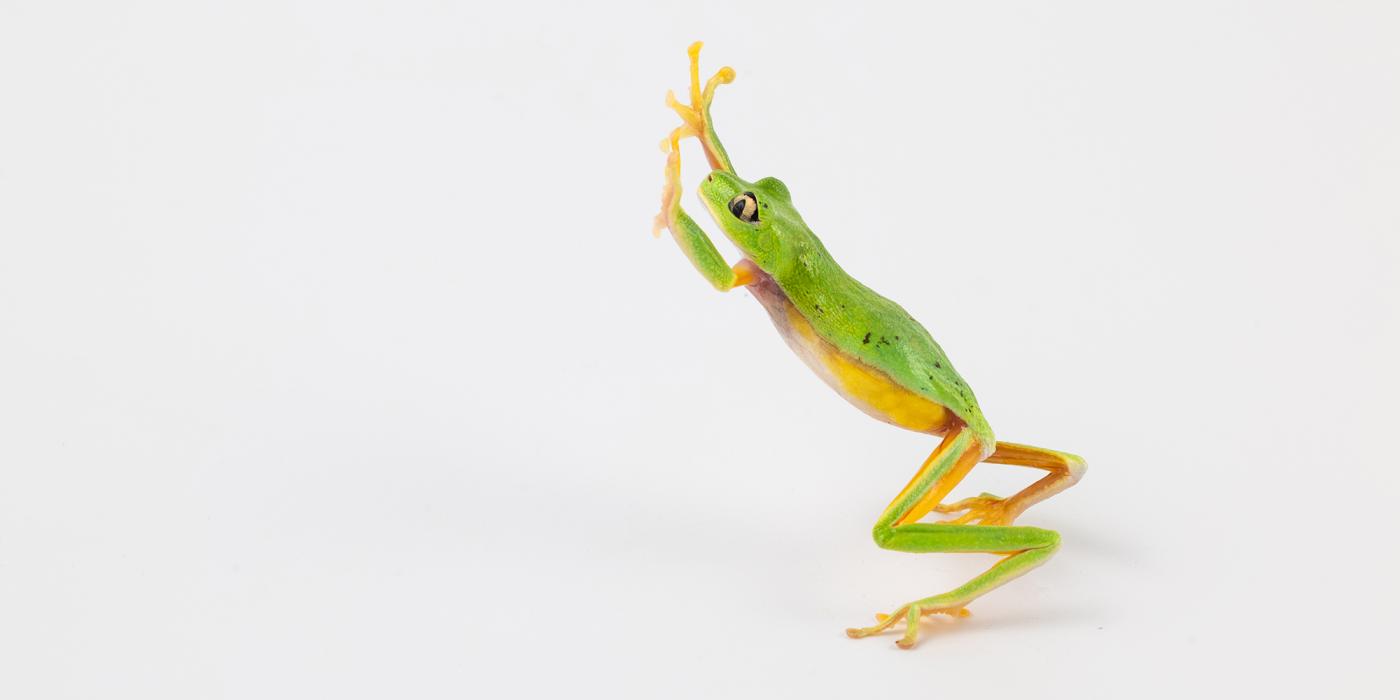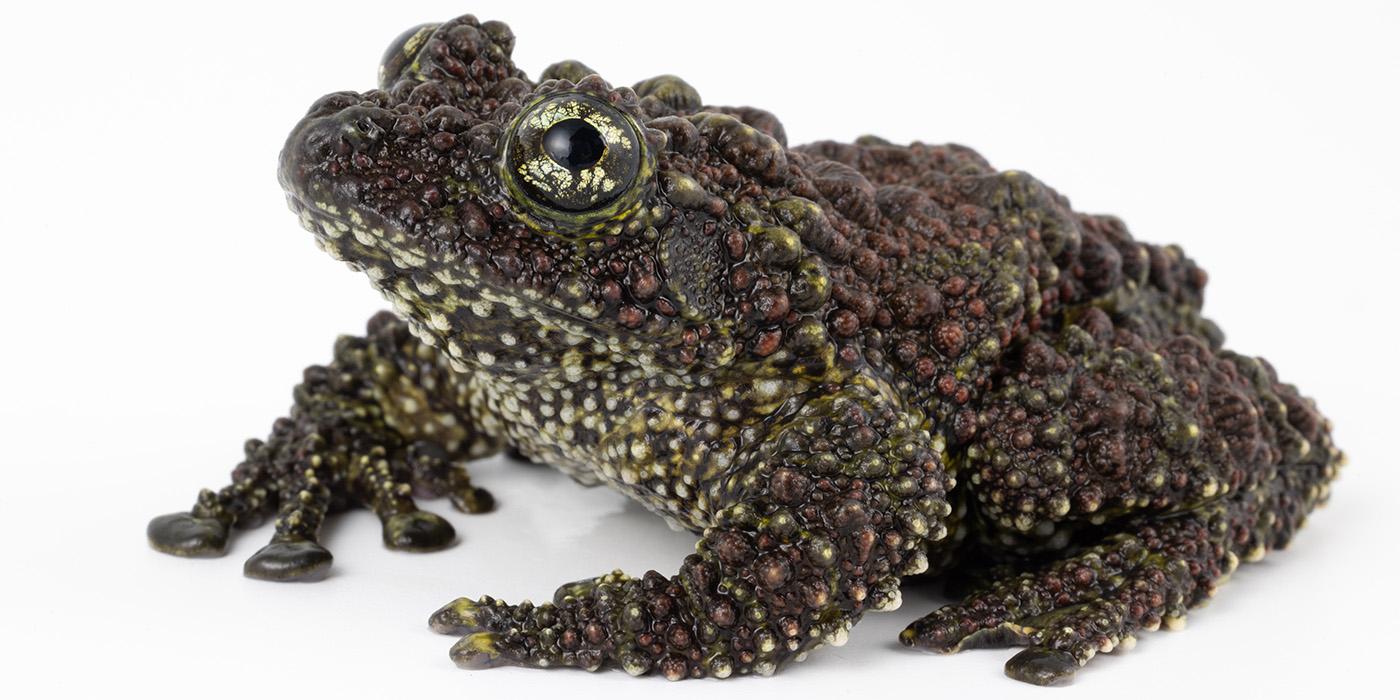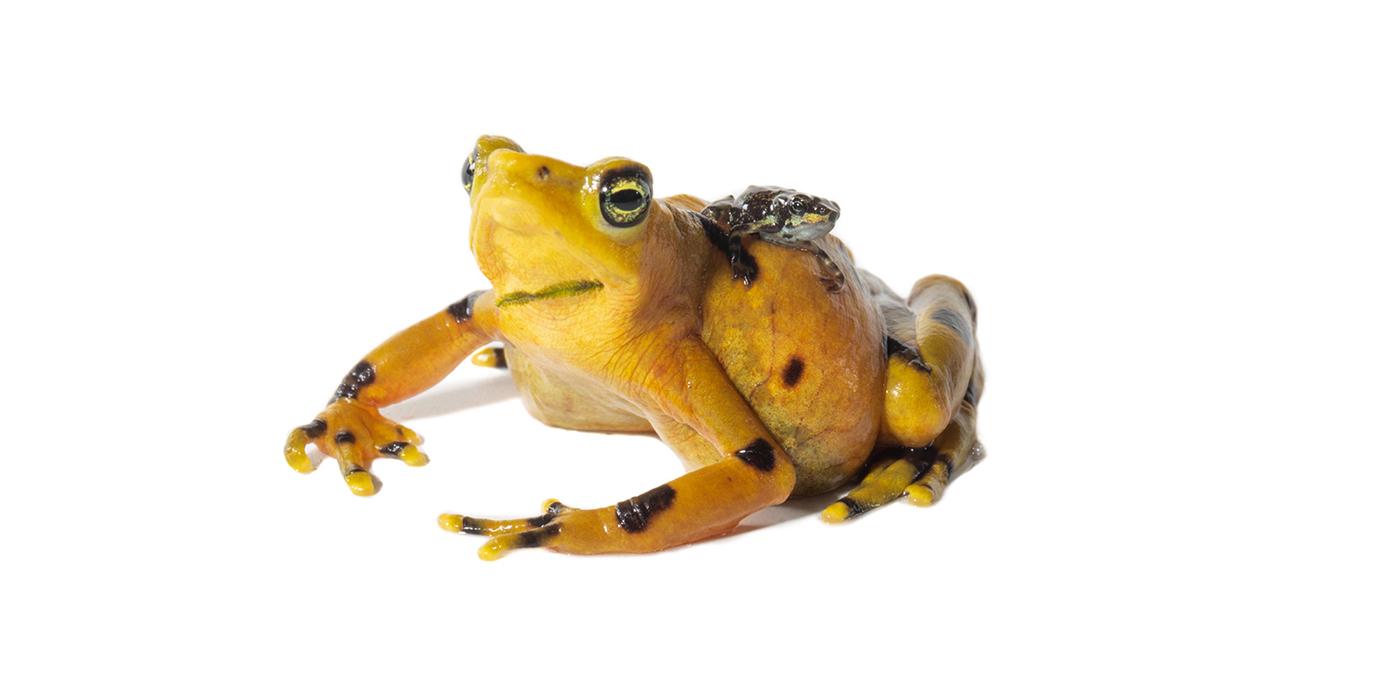How to Care for Frogs

April showers bring National Frog Month! Amphibians—animals that live in water and on land—need specialized habitats, atmospheres and food in order to thrive. Leap into learning what it takes to care for some of the frogs found at Smithsonian’s National Zoo from Matt Evans, assistant curator of the Reptile Discovery Center.
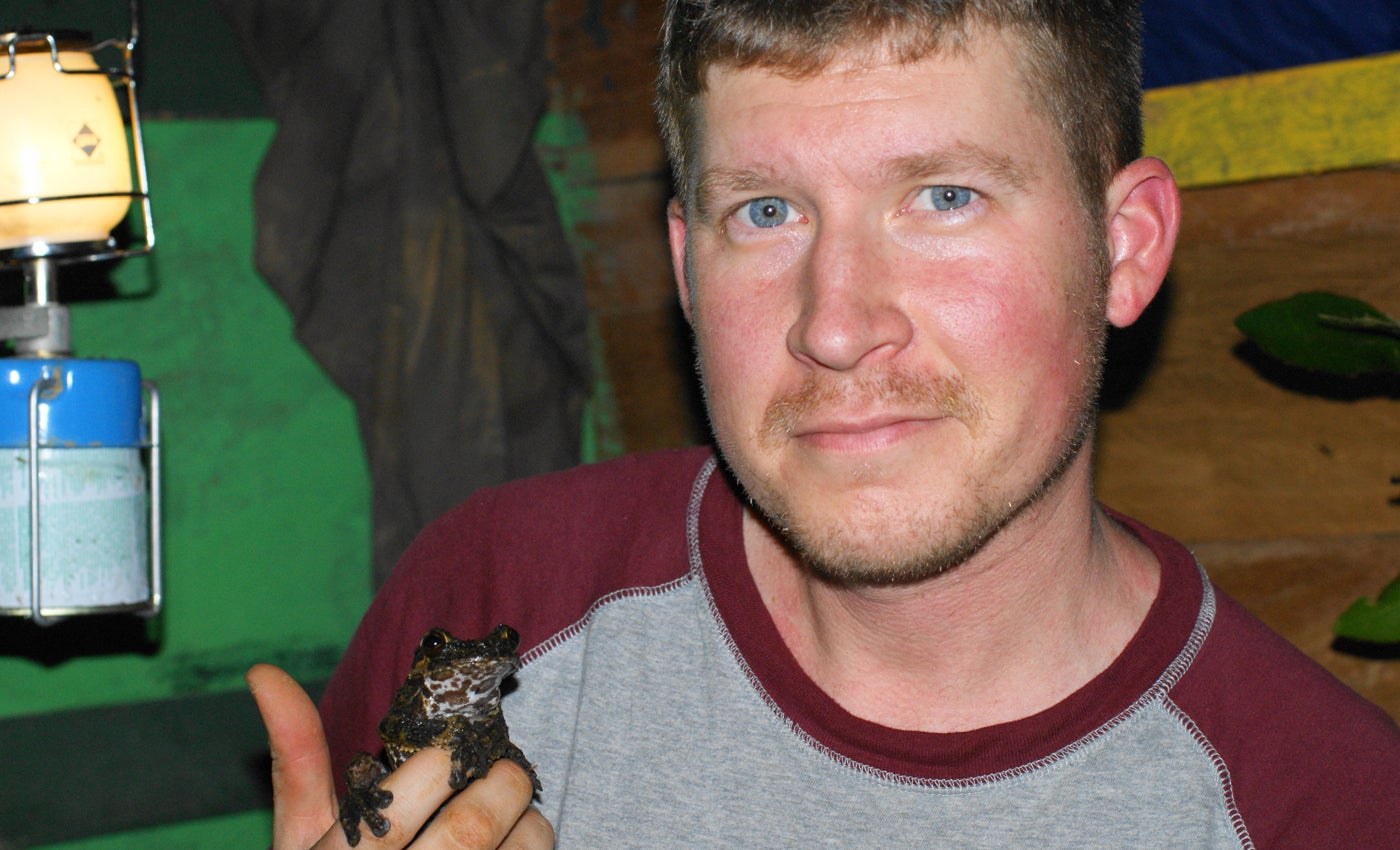
I have been passionate about frogs for as long as I can remember. As a kid, I used to bring home toads and freak my mom out! That’s how it usually starts – a love for animals blossoms into a drive to help them.
Caring for frogs, specifically, can be very rewarding but also extremely frustrating. It all comes down to ensuring they have the perfect environment. The temperature, humidity, water quality and groupings need to be spot on. Frogs are very attuned to the seasons and weather. They feel differences in the atmosphere. It’s important for us caretakers to be aware of seasons and weather so we can mimic their natural environments and use the changes in atmosphere to help elicit their natural behaviors.
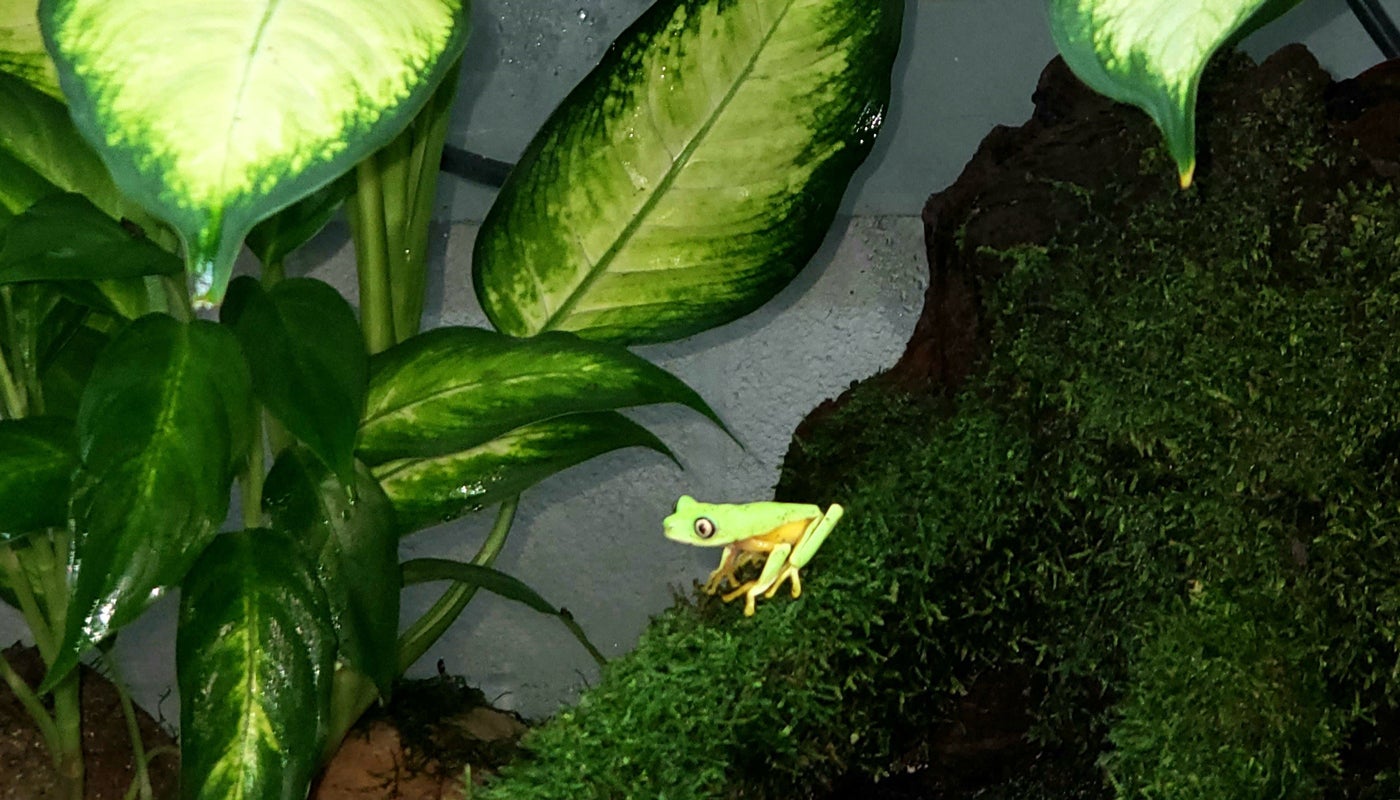
To help us emulate rain, we use automatic misters. Often, we pre-set the time of day and duration to mimic the weather or season. During the rainy season, which usually overlaps with spring, the misters are on almost all the time. If we know a big rainstorm is coming, we will turn them on throughout the storm, too.
Our tanks are designed with a drainage system that allows us to control how much water is in each tank. For red-eyed tree frogs and lemur tree frogs, there should not be much standing water during the dry season. During the rainy season, we keep a couple inches of water at the bottom of the tank.
These tree frogs have a lot of leafy plants in their exhibit. Each amphibian room in Reptile Discovery Center is temperature controlled and we use air conditioning to prevent the temperature from getting too hot. Even tropical frog species do not like the extreme heat. We try to keep the habitats between 70- and 75-degrees Fahrenheit.
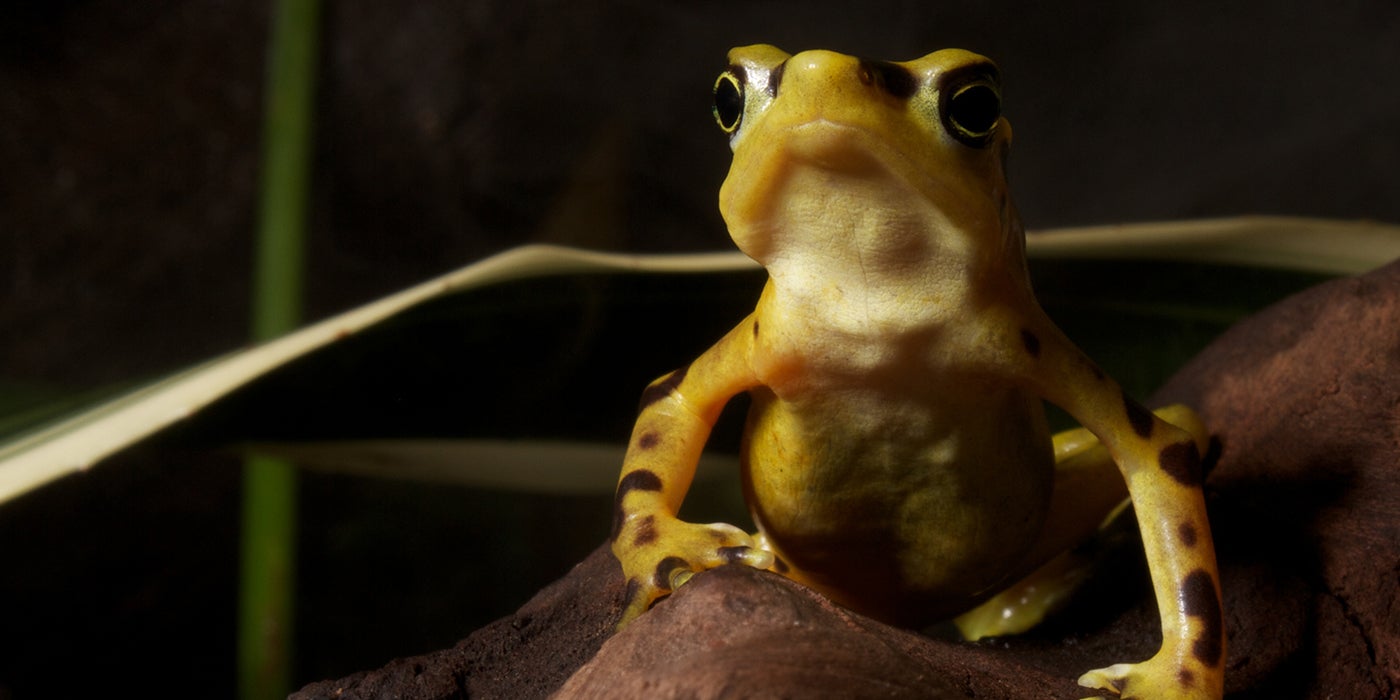
While the tree frogs can live in groups containing one male and a few females, Panamanian golden frogs’ social network is different. Males and females live separately during the non-breeding seasons. Naturally, males live by streams and females live in the woods. When the rains come and signal the start of breeding season, females will migrate to the streams and find males.
If we were to leave the frogs together all the time, the males would continuously think it’s breeding season. They would latch on to the female and, if she’s not ready to breed, may stay on her for weeks waiting. This can be very stressful. So, we mimic the natural separation of the sexes and then a migration with the mist acting as rain to signal breeding season!
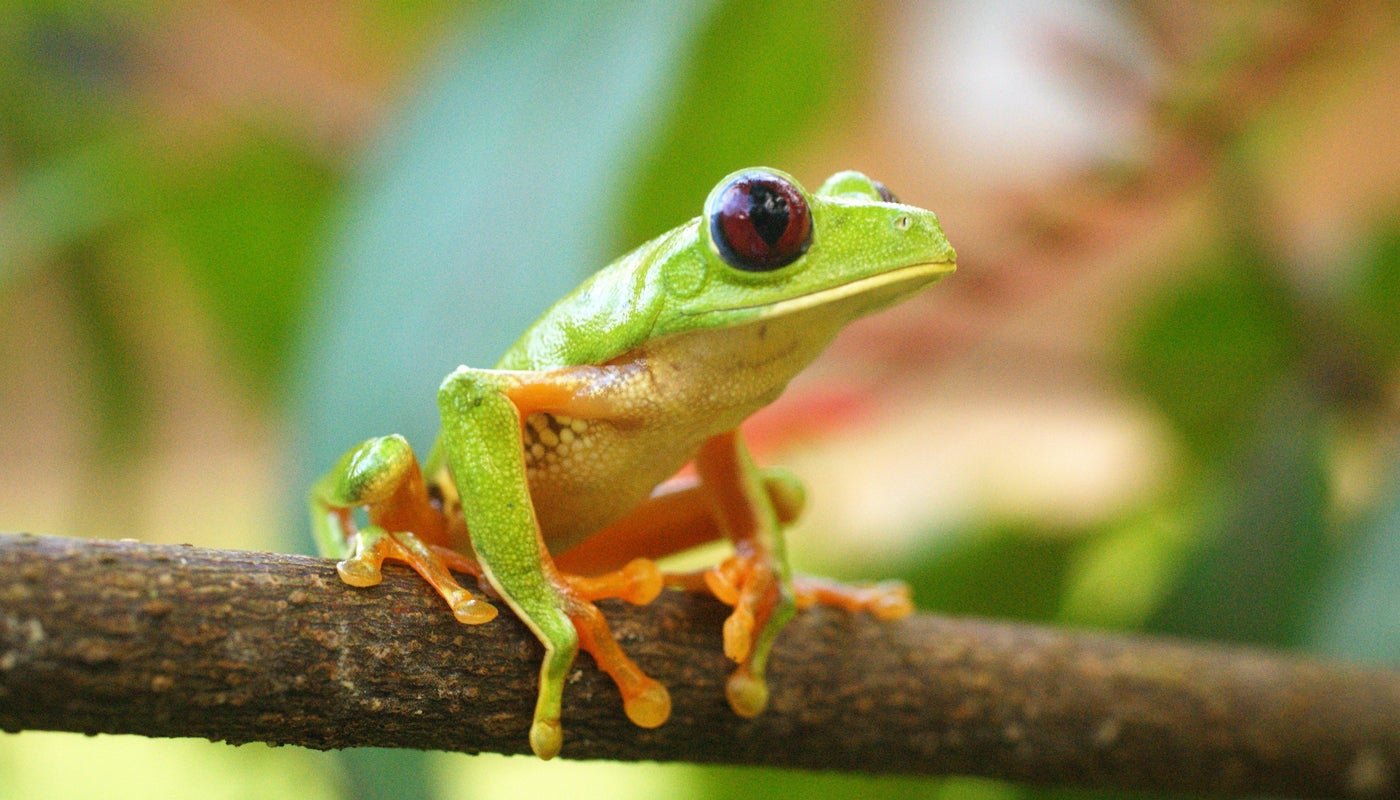
For frogs, enriching their environment can be as simple as changing the substrate (ground cover) and furniture (plants and woody branches) in their enclosures. Sometimes, I will move the perches around or add new plants just to give them a different environment to interact with.
In the wild, frogs spend much of their time hunting prey. We offer our frogs live prey, too, to encourage this natural behavior. Their diets include soldier flies, fruit flies, bean beetles, worms and crickets. Wax worms, or soldier fly larvae, seem to be a favorite. Crickets are also great because they move quickly.
Frogs have good eyesight, and the fast movement catches their attention. Feeding live prey requires our animal care team to have some understanding of how to keep and breed insects, too, so they are in optimal condition for the frogs to eat.
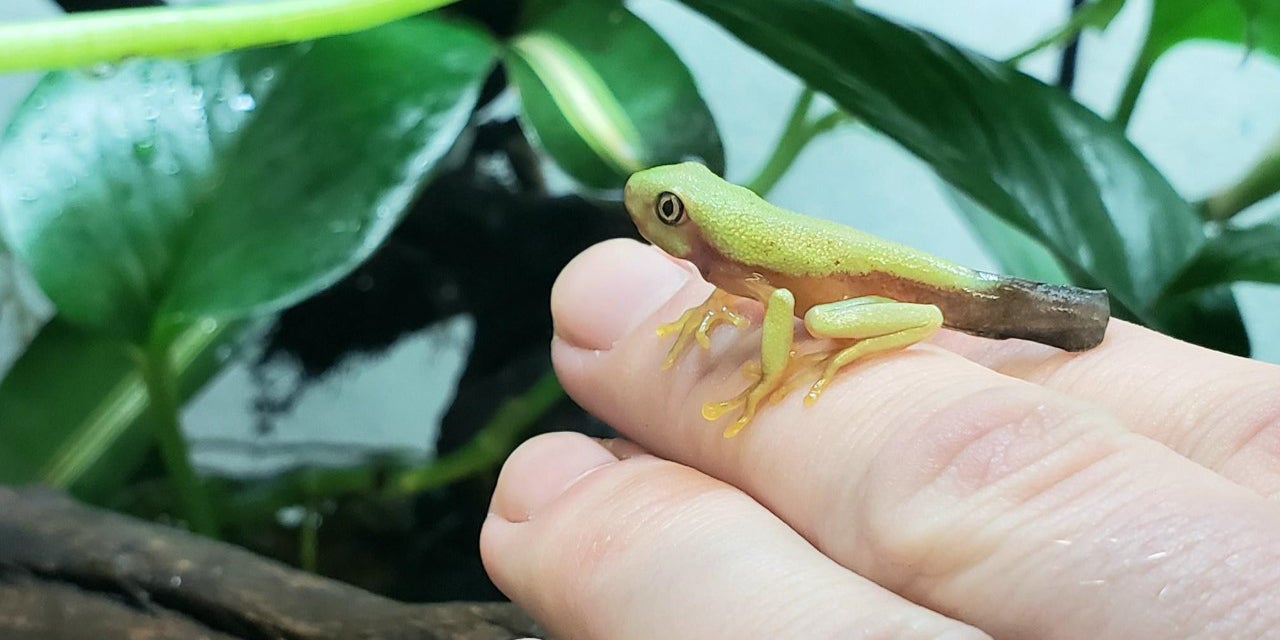
While enrichment for a frog may look a little different than what you would give a mammal or a bird, the way we breed frogs is similar. Just like many animals at the Zoo, some of our frogs have Species Survival Plan (SSP) breeding recommendations! “Matchmaking” frogs allows us to ensure that we are building a genetically diverse population—one that is self-sustaining and can more effectively fight off disease.
Breeding animals and successfully producing offspring is one of the most exciting parts of my job. It’s great when animals breed naturally because their environment is set up just right. It’s even more rewarding after we have to try different tactics and make adjustments. Over the last two years at Reptile Discovery Center, our team has tried to breed lemur tree frogs and coronated tree frogs. After trial and error, we’ve been successful with both!
In particular, the coronated tree frogs are fun to breed because in the wild they lay their eggs in tree holes that are partially filled with water. I was able to mimic this set up using Tupperware, PVC tubes and cork bark. The female lays her eggs on a strip of wood inside the hole, suspended above the water. After a short period of time, the eggs gradually slip down into the water to finish their development.
With most frogs, I would move the tadpoles to a different enclosure once they hatch to keep an eye on their development. However, coronated tree frog tadpoles only eat unfertilized eggs! So, the female stays around and continues to lay eggs for her young to eat.
A lot of amphibians breathe through their skin, but many frogs also have a drink patch—an area on their belly that allows them to absorb water and other nutrients through their semi-permeable skin! While this is helpful, it can also be dangerous and make them more susceptible to diseases.
Chytridiomycosis, or amphibian chytrid, is a fungus that burrows into a frog’s skin. The fungus germinates and infects the frog, and affects the frog’s ability to properly drink, breathe or perform other bodily functions. This can cause a frog’s organs to not function normally. Eventually, the frog will have a heart attack and die.

While amphibian chytrid fungus is everywhere in nature, we have learned that not all frogs are impacted equally. As I mentioned before, frogs need specific environmental conditions to survive and thrive. Any changes to those conditions, especially if they happen rapidly, could spell big trouble for the frogs.
Take the Panamanian golden frog, which lives at high elevations in cloud forests where the temperature is cooler. Historically, the sun warmed the frogs up during the day. Now, there are various changes in the environment causing shifts in the seasons and extreme temperature fluctuations.
Unable to properly regulate their body temperature, Panamanian golden frogs become stressed and their immune system becomes compromised. Then, when the fungus attacks, the frogs can’t fight it off. Before chytrid fungus, these frogs used to be everywhere in their home ranges. Today, they are functionally extinct in the wild, meaning there are so few individuals left the population cannot successfully maintain itself.
Red-eyed tree frogs, on the other hand, are quite tolerant of environmental changes. They seem to be able to adapt to a variety of temperatures and habitats with minimal (if any) impact to their health. Since they are not under constant stress, their bodies can respond to and fight off emerging diseases.
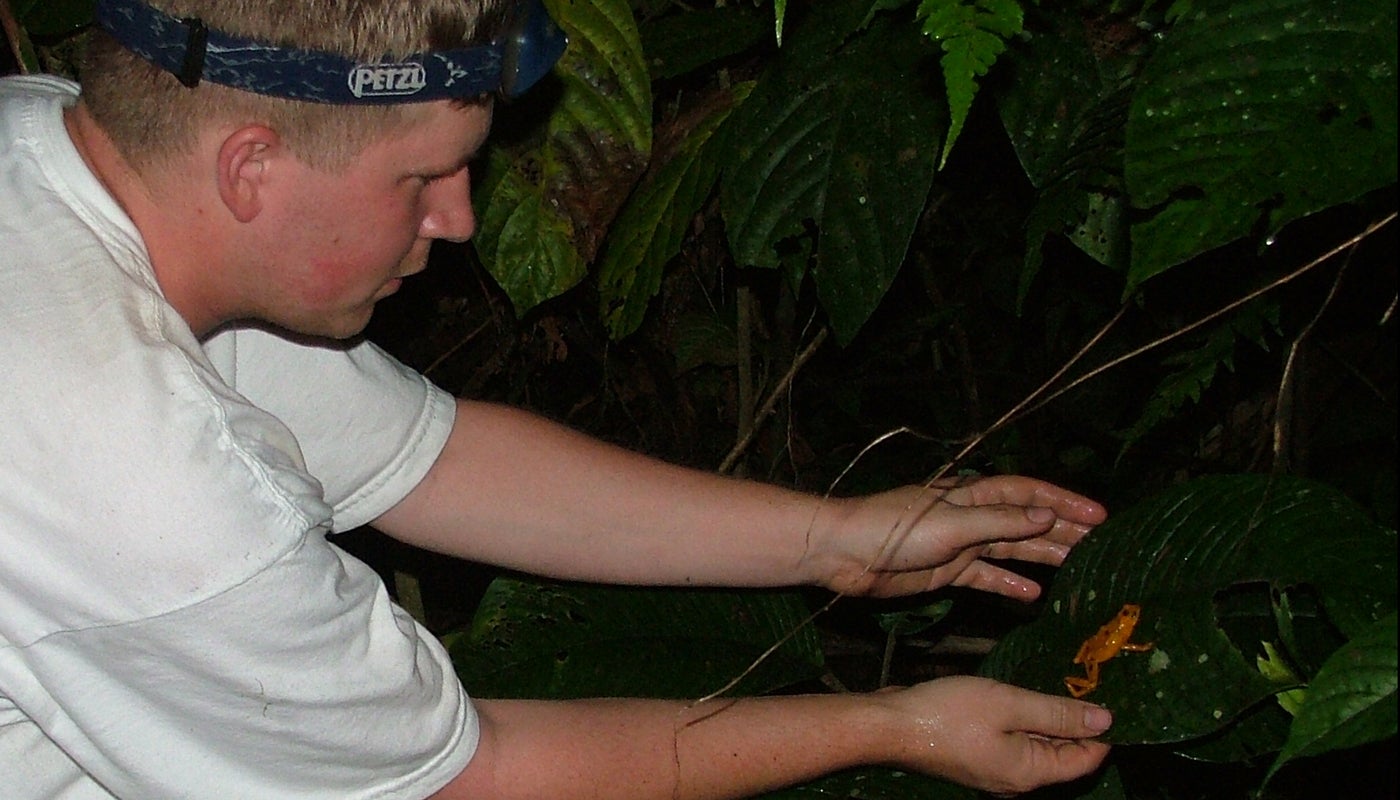
Thankfully, scientists both at zoos and in the field are working hard to help frogs. The Smithsonian’s National Zoo is a member of the Panama Amphibian Rescue and Conservation Project—an organization that researches, breeds and reintroduces frogs into their native habitat.
For any “tadpoles” eager to help frogs, my advice is to leap into learning all you can about amphibians. Look into their life histories, study biology and chemistry, and dive into the latest research on emerging diseases. Classroom education is important, but so is hands-on experience. If you want to work with frogs, try your hand at an internship or volunteer position at your local zoo. Our knowledge about these animals is constantly expanding, so being a life-long student will come in handy on this career path!
Hop into more stories from our keepers! Check out a variety of stories from all over Smithsonian’s National Zoo and Conservation Biology Institute here.
